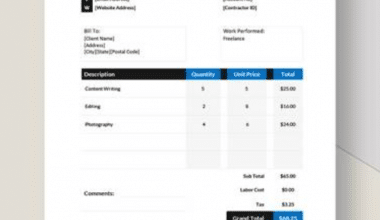General aggregates might be confusing at times, particularly when it comes to specific insurance policies or insurance regulations. That is why we have created this guide to make you grab the full gist of what the General aggregate limit is and the Insurance.
General Aggregate Limit
The general aggregate is the most money that a liability insurance policy will pay out in a given policy term.
What is the importance of the general aggregate?
Without delving too further, the general aggregate is critical to your business. If you have a terrible situation claim, you will still have coverage after that claim because a single claim will not invalidate your entire insurance policy.
Furthermore, because you and the insurance company will agree on the maximum amount that the insurance policy will payout. it makes insurance more inexpensive. And besides, you can always increase your limit.
Which insurance policies don’t have an aggregate limit?
An aggregate limit is not in every insurance policy. If a policy is mandatory by the government, it is unlikely to have an aggregate limit.
Here are some of the policies we’re discussing:
Auto Insurance
Unlike a general liability policy, auto liability insurance does not have aggregate limits. A universal aggregate limit makes no sense. Because everyone who drives is required by law to carry auto insurance. Moreover, there would-be drivers on the road who are technically covered but have used up their coverage!
Compensation for Employees
If you are an employer, it is your obligation by state law to have workers’ compensation insurance to cover employee injuries that occur on the job.
Additionally, an employee has the right to a fairly safe workplace. As well as the payment of medical fees if they are hurt on the job.
It is not the employee’s responsibility if the employer has had a string of bad claims that year and their worker’s compensation policy has been exhausted. The company is still required by law to pay the employee what is owed to them.
Common Problems With General Aggregate
Below are problems we see in the general aggregate limit.
Non-Concurrent Effective Dates
If you purchase additional limits of liability on an excess insurance policy. And the underlying policies do not all have the same policy effective dates, you may run into issues.
It is possible that the general aggregate is restored on the primary liability insurance but not on the umbrella policy, or vice versa.
Non-concurrent effective dates aren’t always a concern, however, make sure you talk to your insurance broker about it.
Insurance Requirements
We’ve observed several insurance needs that necessitate unusual aggregate limits. however, The bulk of insurance plans, for example, are $1,000,000 per event and $2,000,000 general aggregate.
A contract requiring $2,000,000 per occurrence and $5,000,000 general aggregate is tricky because a $1 million excess liability policy would only cover the occurrence requirement. but a $3 million excess liability policy may feel like you’re buying too much insurance.
If this describes you, it’s time to speak with your insurance broker! In certain cases, underwriters can be inventive. Moreover, they may offer an enhanced aggregate limit on the primary liability coverage, allowing you to avoid purchasing the full $3 million excess.
Too many additional insureds.
Companies are quick to grant “additional insured” status on their insurance policies in order to gain employment and business. The issue is that your insurance coverage is now protecting 200 additional firms in addition to you. So, this could lead to the necessity for substantially larger limits in order to cover all of the parties your insurance company is defending.
General Aggregate Insurance
In insurance, the general aggregate is the entire amount that you can claim from your insurance company over the policy period, which is usually one year. Moreover, the total assists the insurance firm in creating an incentive for its policyholders to avoid lawsuits. However, if you have too many in a single year, you will reach the aggregate limit of responsibility. Unlike per-occurrence restrictions, you can know when you’re approaching the aggregate insurance limit, so understanding it now is really beneficial.
How Is the Aggregate Limit Determined?
So, what exactly does the general aggregate imply? Assume your policy has a $10,000 general aggregate liability limit. If you have already been sue for $4,000 and $5,000 this year and are now being sue for $2,000. Then your insurance carrier will only cover the first $1,000 of the final claim. Please remember that the aggregate insurance limit only applies to money paid out by the insurance company. As such, if you have a $5,000 per-occurrence limit and are sue for $7,000. Then your insurance company will most likely pay $5,000 and you will have to pay the remaining $2,000 out of pocket. So, when calculating how close you are to the aggregate limit, just count $5,000 from that specific claim.
What Should I Know Before Purchasing an Insurance Policy?
Understanding these limits is critical when selecting a policy because you want to ensure that it will assist you when you need it. If you work with expensive materials and the average damage claim is $1 million, a $1,000 aggregate limit won’t be enough. Furthermore, Policies with high limits, on the other hand, are frequently more costly, so you don’t want to pay for a policy with a $1 million limit if claims in your field are rarely more than a few thousand dollars.
Types of Aggregate
You can reach the aggregate limit of your insurance policy in a variety of ways. Businesses in various industries have varying insurance requirements. Depending on the demands of your organization, your tailored commercial insurance policy may employ several aggregate kinds to reimburse claims. These are the most prevalent aggregate types.
Policy Aggregate
Also known as the general aggregate, your policy aggregate limit specifies the maximum amount of coverage available for all covered claims during the policy’s term.
#1. Per Project Aggregate
General aggregate limitations apply to each project on which the policyholder works. Moreover, The policy aggregate should then distribute it among multiple items. This aggregate is use in the construction sector when a company works on multiple projects.
#2. Per Location Aggregate
When insurance limits are split over multiple sites. Each location has an aggregate limit that applies to all of the policyholder’s locations. However, this sort of aggregate is use by owners of various buildings and retail establishments.
#3. Products-Completed Aggregate
Often distinct from your policy aggregate, your products-completed aggregate is the maximum amount your policy will pay out on approved claims when your product or completed service causes bodily harm or property damage.
Aggregate Limit vs. Occurrence Limit
Insurance covers you from the costs of unanticipated incidents and accidents. However, y our insurance may have more than one limit to accomplish this properly. An occurrence limit is the most money your insurer will pay you for a single covered incident or claim. While the aggregate limit is the most your insurer will pay for all covered claims during the period of your policy. Depending on your policy limits, a single claim or a series of claims can exceed your aggregate maximum.
Umbrella vs. General Aggregate
Hitting your general aggregate limit may appear to be a disaster, however, there are ways to protect yourself. Commercial umbrella insurance is a supplemental policy that provides coverage when your primary policy limit is reached. When your general aggregate limit is exceeded, a business umbrella insurance works as an additional layer of liability coverage. Thereby protecting you from liabilities that would otherwise have to be paid out of pocket.
Making Use of Your Aggregate Limit
Learning how your aggregate limit works when filing claims is part of understanding it. If you have a $20,000 general liability aggregate limit and you’ve been sued for $5,000 twice, $4,000 once, and $3,000 once, you’re only $3,000 away from exceeding your aggregate limit. Furthermore, if a covered event costs $5,000, you will be responsible for $2,000 of the cost out of pocket. Finally, if any additional claims are filed throughout the duration of your policy’s term, you will be responsible for paying the costs yourself. That is why it is critical to set a coverage level that is suitable for the risks you experience in your specific organization.
Which Limitation Is Not a Part of the Overall Aggregate Limit?
Only damages resulting from physical harm or property damage resulting from the danger of the products-completed operation are exempt from the general aggregate limit.
What Is the Difference Between a Global and Aggregate Limit?
Your insurer will stop paying claims once you’ve reached your aggregate limit for the duration of the policy. Your commercial insurance policy’s general aggregate limit refers to the highest sum that your insurer will pay for covered liability claims during the period of your policy.
What Does Total Aggregate Limit Mean?
Your aggregate limit is the maximum amount that your insurer will provide for any claims that you submit over the policy period, which is normally one year. In contrast to per-occurrence (or per-claim) limits, aggregate limits are different. These speak about the highest sum insurance will shell out for a single occurrence or claim.
Does the Word “Aggregate” Signify “Average” or “Total”?
A procedure known as aggregation involves gathering data for statistical analysis and expressing it as a single number. This could be expressed as a sum or an average.
Conclusion
The general aggregate is the most money that a liability insurance policy will pay out in a given policy term.
General Aggregate FAQ’s
What does General Aggregate Limit mean in insurance?
For various types of insurance, an aggregate limit is the maximum amount of money an insurer will pay for all your covered losses during the policy period, typically one year.
Which limit is not included in the general aggregate limit?
Under the standard commercial general liability (CGL) policy, the general aggregate limit applies to all covered bodily injury (BI) and property damage (PD) (except for injury or damage arising out of the products-completed operations hazard) and all covered personal and advertising injury.
What is the difference between each occurrence and general aggregate?
Per-occurrence limits and aggregate limits both define maximum payouts, but they do so in different settings. Per-occurrence limits define how much a policy will pay for any one incident or claim. Aggregate limits define how much a policy will pay over the policy’s duration.
- Discretionary Fiscal Policy: 2022 Definitive Guide(+Detailed Examples)
- Pell Grant Income Limits: 2022 Best Practices & All You Need
- Cash Balance Plan for Retirement: Contributions Limits 2022 (Updated!)
- Cash Balance Plan for Retirement: Contributions Limits 2022 (Updated!)
- General Liability Insurance Policy: For Businesses
- BUSINESS INSURANCE: Definition, Types, Example, Cost & How it Works






